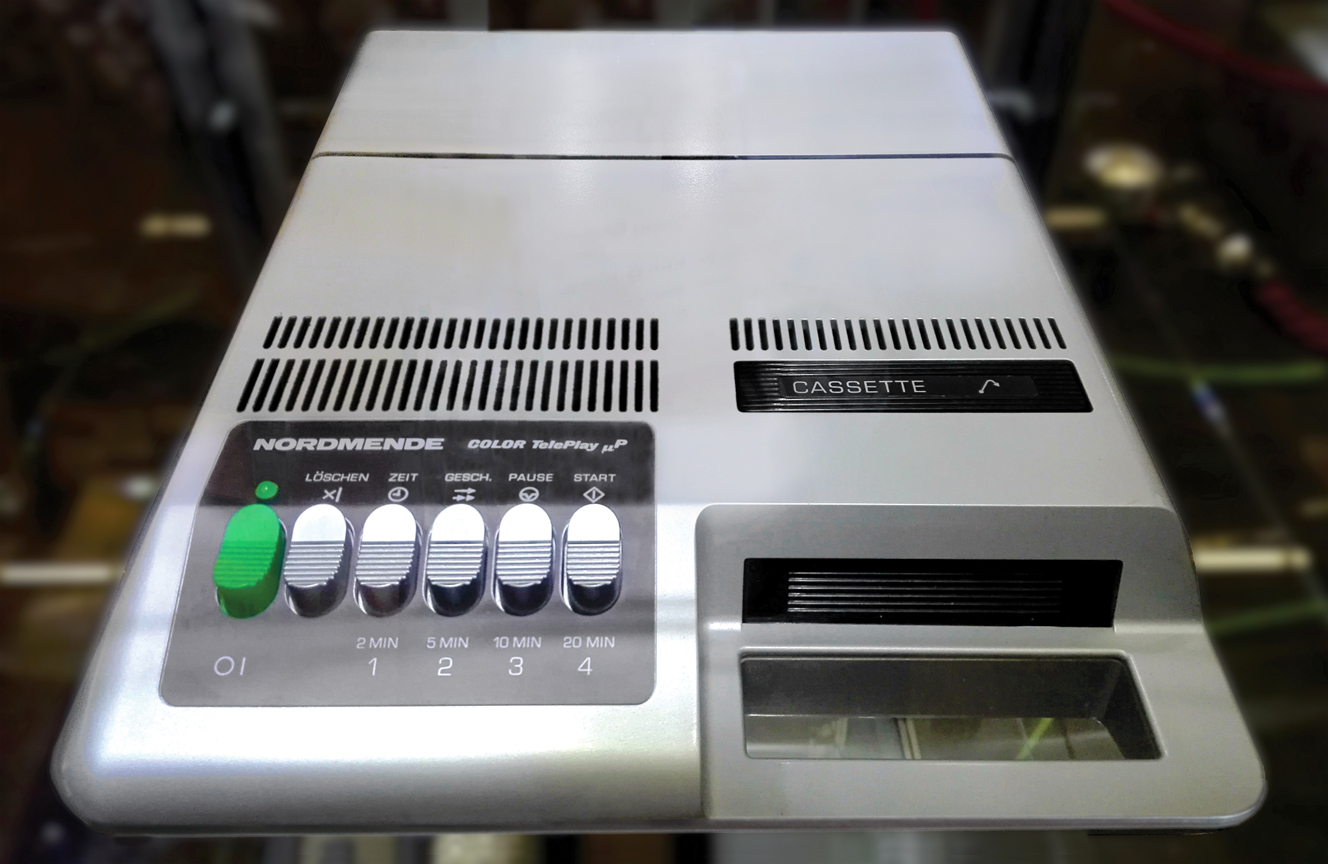|
Fairchild Channel F
The Fairchild Channel F, short for "Channel Fun", is a video game console, the first to be based on a microprocessor and to use ROM cartridges instead of having games built-in. It was released by Fairchild Camera and Instrument in November 1976 across North America at a retail price of . It was launched as the "Video Entertainment System", but when Atari released its Video Computer System the next year, Fairchild rebranded their machine as "Channel F" while keeping the Video Entertainment System descriptor. The Fairchild Channel F achieved only about 350,000 units before Fairchild sold the technology to Zircon International in 1979, trailing well behind the VCS. The system was discontinued in 1983. History In 1974, Alpex Computer Corporation employees Wallace Kirschner and Lawrence Haskel developed a home video game prototype consisting of a base unit centered on an Intel 8080 microprocessor and interchangeable circuit boards containing ROM chips that could be plugged into ... [...More Info...] [...Related Items...] OR: [Wikipedia] [Google] [Baidu] |
Jerry Lawson (engineer)
Gerald Anderson Lawson (December 1, 1940 – April 9, 2011) was an American electronic engineer. He is known for his work in designing the Fairchild Channel F video game console as well as leading the team that pioneered the commercial video game cartridge."The Untold Story Of The Invention Of The Game Cartridge" FastCompany. He was thus dubbed the "father of the videogame cartridge" according to '''' magazine in 1982. He eventually left |
8-bit Computing
In computer architecture, 8-bit integers or other data units are those that are 8 bits wide (1 octet). Also, 8-bit central processing unit (CPU) and arithmetic logic unit (ALU) architectures are those that are based on registers or data buses of that size. Memory addresses (and thus address buses) for 8-bit CPUs are generally larger than 8-bit, usually 16-bit. 8-bit microcomputers are microcomputers that use 8-bit microprocessors. The term '8-bit' is also applied to the character sets that could be used on computers with 8-bit bytes, the best known being various forms of extended ASCII, including the ISO/IEC 8859 series of national character sets especially Latin 1 for English and Western European languages. The IBM System/360 introduced byte-addressable memory with 8-bit bytes, as opposed to bit-addressable or decimal digit-addressable or word-addressable memory, although its general-purpose registers were 32 bits wide, and addresses were contained in the lower 24 bits of thos ... [...More Info...] [...Related Items...] OR: [Wikipedia] [Google] [Baidu] |
Creative Computing
''Creative Computing'' was one of the earliest magazines covering the microcomputer revolution. Published from October 1974 until December 1985, the magazine covered the spectrum of hobbyist/home/personal computing in a more accessible format than the rather technically oriented ''Byte (magazine), Byte''. The magazine was created to cover educational-related topics. Early issues include articles on the use of computers in the classroom, various simple programs like madlibs and various programming challenges, mostly in BASIC programming language, BASIC. By the late 1970s, it had moved towards more general coverage as the microcomputer market emerged. Hardware coverage became more common, but type-in programs remained common into the early 1980s. The company published several books, the most successful being ''BASIC Computer Games'', the first million-selling computer book. Their ''Best of Creative Computing'' collections were also popular. ''Creative Computing'' also published so ... [...More Info...] [...Related Items...] OR: [Wikipedia] [Google] [Baidu] |

